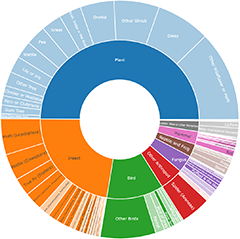Other Trees
Announcements
Yesterday
Hello NatureMaprsAs we move into the cooler months and sighting counts begin to wind down our team has been working tirelessly to ensure our platform’s usability and performance. All merch has been po...
Continue reading
Improvements to data import tool (coming soon)
NatureMapr welcomes Edgar McNamara
Platform wide attribute changes
New Feature: Moderator Quick Responses!
Discussion
Mike
wrote:
1 hr ago
There are already enough spiky plants around - fire thorn, rose, blackberry and hawthorn - without wanting to have ornamental pears.
Pyrus calleryana
waltraud
wrote:
30 Apr 2025
drainage line behind a garden with all (and more) weed species listed above
Ligustrum lucidum
Mike
wrote:
29 Apr 2025
I saw your list and noted that A. campestre was pre-Canberra. Lindsay Pryor's book 'Trees in Canberra' lists Pistachia chinensis for Hartog St Griffith; there is at least one left but the others must have been replaced with A. capestre and A. monspessulanum some time between 1960 and 2001 (which is the date for my other list of trees).
Acer campestre
Top contributors
- dhkmapr 5.4K
- plants 567
- Mike 536
- Tapirlord 377
- MichaelBedingfield 251
- waltraud 245
- abread111 226
- lbradley 167
- trevorpreston 154
- Carine 150
Top moderators
- dhkmapr 5.4K
- Tapirlord 1.3K
- MichaelMulvaney 896
- plants 831
- natureguy 371
- MichaelBedingfield 280
- BettyDonWood 234
- waltraud 131
- abread111 108
- Darcy 108



